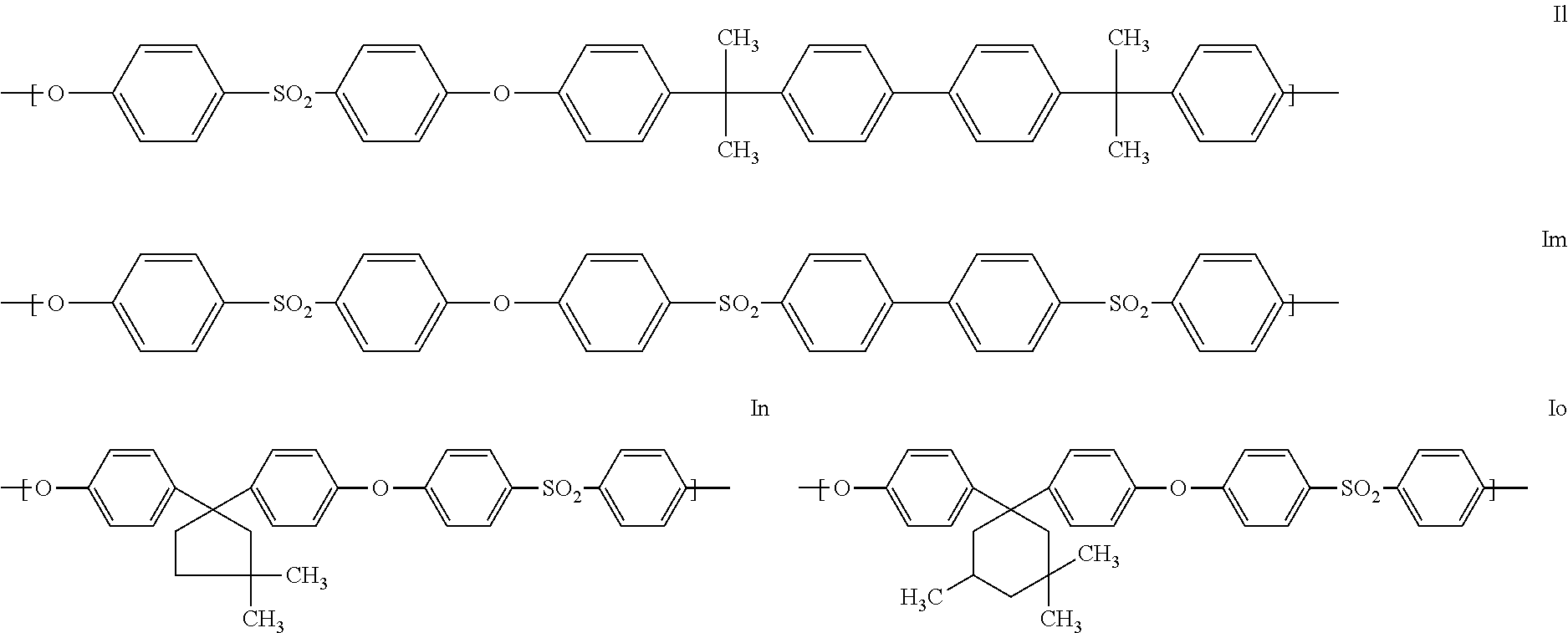Process for producing high-performance thermoplastics with improved intrinsic color
a thermoplastic and intrinsic color technology, applied in the field of high-performance thermoplastics with intrinsic color improvement, can solve problems such as on-going discoloration of polymers, and achieve the effect of improving intrinsic color and minimizing the conversion of n-methylpyrrolidon
- Summary
- Abstract
- Description
- Claims
- Application Information
AI Technical Summary
Benefits of technology
Problems solved by technology
Method used
Image
Examples
examples
[0081]The intrinsic viscosity of the polyarylene ethers was determined in 1% N-methyl-pyrrolidone solution at 25° C. in accordance with DIN EN ISO 1628-1.
[0082]Yellowness index (YI) was measured in accordance with DIN 6167 EN “Description of yellowness of near-white or near-colourless materials”, Jan. 1, 1980.
[0083]The transparency value and the haze value were determined in accordance with ASTM D1003 EN “Standard Test Method for Haze and Luminous Transmittance of Transparent Plastics”, Jan. 1, 2011.
[0084]The polyarylene ether sulfone polymer solution was isolated by separation of the polymer solution by way of a capillary into deionized water at 25° C. (drop height 0.5 m, throughput about 2.5 L / h). The resultant polyarylene ether at 150° C. sulfone beads were then extracted with water at 85° C. for 20 h (water throughput 160 L / h). The beads were then dried in vacuo (<100 mbar) to a residual moisture level of less than 0.1% by weight. The dried polyarylene ether sulfone beads were e...
examples 2 and 3
[0091]The hydrogenation process was carried out in a continuous system with an isothermally operated tubular reactor (length 1.8 m, internal diameter 1.0 cm) by the straight-pass method and with a Cu / La oxide / Al oxide catalyst produced in accordance with WO 2006 / 005505, example 3 (catalyst activation in the system: 70 h at 180° C., 50 NL / h of N2, 4 NL / h of H2; then 7 h at 180° C., 4 NL / h of H2, 190 mL, 190 mL (NL=standard liters, i.e. volume of gas under standard conditions). Ancillary heating was provided here not only to the feed but also to the lines, to from 90 to 100° C., in order to maintain the flowability of the polymer solution in NMP. All of the experiments were carried out with a loading of 1.1 kgpolymer solution / Lcat / h, and the resultant polymer solutions were then, as previously described, precipitated out and worked up. In the hydrogenation experiments, the feeds and outputs were always blanketed with argon.
[0092]Conversion of NMP to N-methylpyrrolidine was in all case...
PUM
| Property | Measurement | Unit |
|---|---|---|
| pressure | aaaaa | aaaaa |
| temperature | aaaaa | aaaaa |
| yellowness index | aaaaa | aaaaa |
Abstract
Description
Claims
Application Information
 Login to View More
Login to View More - R&D
- Intellectual Property
- Life Sciences
- Materials
- Tech Scout
- Unparalleled Data Quality
- Higher Quality Content
- 60% Fewer Hallucinations
Browse by: Latest US Patents, China's latest patents, Technical Efficacy Thesaurus, Application Domain, Technology Topic, Popular Technical Reports.
© 2025 PatSnap. All rights reserved.Legal|Privacy policy|Modern Slavery Act Transparency Statement|Sitemap|About US| Contact US: help@patsnap.com



